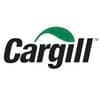1. Akbari P, Braber S, Gremmels H et al (2014) Deoxynivalenol: a trig- ger for intestinal integrity breakdown. FASEB J 28:2414–2429
2. Amat C, Piqueras JA, Planas JM, Moret M (1999) Electrical properties of the intestinal mucosa of the chicken and the efects of luminal glucose. Poult Sci 78:1126–1131
3. Andretta I, Kipper M, Lehnen CR, Hauschild L, Vale MM, Lovatto PA (2011) Meta-analytical study of productive and nutritional interactions of mycotoxins in broilers. Poult Sci 90:1934–1940
4. Antonissen G, Van Immerseel F, Pasmans F et al (2014) The mycotoxin deoxynivalenol predisposes for the development of Clostridium perfringens-induced necrotic enteritis in broiler chickens. PLoS One 9:e108775
5. Antonissen G, Van Immerseel F, Pasmans F et al (2015) Mycotox- ins deoxynivalenol and fumonisins alter the extrinsic component of intestinal barrier in broiler chickens. J Agri Food Chem 63(50):10846–10855
6. Aschenbach JR, Oswald R, Gäbel G (2000) Transport, catabolism and release of histamine in the ruminal epithelium of sheep. Pfugers Arch 440:171–178
7. Awad WA, Böhm J, Razzazi-Fazeli E, Hulan HW, Zentek J (2004) Efects of deoxynivalenol on general performance and electro physiological properties of intestinal mucosa of broiler chickens. Poult Sci 83:1964–1972
8. Awad WA, Böhm J, Razzazi-Fazeli E, Zentek J (2005a) In vitro efects of deoxynivalenol on electrical properties of the intestinal mucosa of laying hens. Poult Sci 84:921–927
9. Awad WA, Rehman H, Bohm J, Razzazi-Fazeli E, Zentek J (2005b) Efects of luminal deoxynivalenol and l-proline on electrophysi- (2003) Efects of graded levels of Fusarium toxin-contaminated ological parameters in the jejunums of laying hens. Poult Sci wheat and of a detoxifying agent in broiler diets on performance, 84:928–932
10. Awad WA, Böhm J, Razzazi-Fazeli E, Zentek J (2006a) Efects of feeding deoxynivalenol contaminated wheat on growth performance, organ weights and histological parameters of the intestine of broiler chickens. J Anim Physiol Anim Nutr 90:32–37
11. Awad WA, Razzazi-Fazeli E, Böhm J, Ghareeb K, Zentek J (2006b) 8:e71492 Efect of addition of a probiotic microorganism to broiler diets contaminated with deoxynivalenol on performance and histological alterations of intestinal villi of broiler chickens. Poult Sci 85:974–979
12. Awad WA, Aschenbach JR, Setyabudi FMCS, Razzazi-Fazeli E, Böhm J, Zentek J (2007a) In vitro efects of deoxynivalenol on small intestinal d-glucose uptake and absorption of deoxynivalenol across the isolated jejunal epithelium of laying hens. Poult Sci 86:15–20
13. Awad WA, Razzazi-Fazeli E, Böhm J, Zentek J (2007b) Infuence of deoxynivalenol on the d-glucose transport across the isolated epithelium of diferent intestinal segments of laying hens. J Anim Physiol Anim Nutr 91:175–180
14. Awad WA, Ghareeb K, Böhm J, Zentek J (2010) Decontamination and detoxifcation strategies for the Fusarium mycotoxin deoxynivalenol in animal feed and the efectiveness of microbial biodegradation. Food Addit Contam 27:510–520
15. Awad WA, Hess M, Twaruzek M et al (2011a) The impact of the Fusarium mycotoxin deoxynivalenol on the health and performance of broiler chickens. I J Mol Sci 12:7996–8012
16. Awad WA, Vahjen W, Aschenbach JR, Zentek J (2011b) A diet naturally contaminated with the Fusarium mycotoxin deoxynivalenol down regulates gene expression of glucose transporters in the intestine of broiler chickens. Livestock Sci 140:72–79
17. Awad WA, Ghareeb K, Böhm J (2012a) The toxicity of the Fusarium toxin deoxynivalenol in poultry feeding. World’s Poult Sci J 68:651–668
18. Awad WA, Ghareeb K, Dadak A et al (2012b) Genotoxic efects of deoxynivalenol in broiler chickens fed with low protein diets. Poult Sci 91:550–555
19. Awad W, Ghareeb K, Böhm J, Zentek J (2013) The toxicological impacts of the Fusarium mycotoxin, deoxynivalenol, in poultry focks with special reference to immunotoxicity. Toxins 5:912–925
20. Awad WA, Ghareeb K, Zentek J (2014a) Mechanisms underlying the inhibitory efect of the feed contaminant deoxynivalenol on glucose absorption in broiler chickens. Vet J 202:188–190
21. Awad WA, Ghareeb K, Dadak A, Hess M, Böhm J (2014b) Single and combined efects of deoxynivalenol mycotoxin and a microbial feed additive on lymphocyte DNA damage and oxidative stress in broiler chickens. PLoS One 9:e88028
22. Awad WA, Molnár A, Aschenbach JR et al (2015) Campylobacter infection in chickens modulates the intestinal epithelial barrier function. Innate Imm 21:151–160
23. Awad WA, Dublecz F, Hess C et al (2016a) Campylobacter jejuni colonization promotes the translocation of Escherichia coli to extra-intestinal organs and disturbs the short-chain fatty acids profles in the chicken gut. Poult Sci 95:2259–2265
24. Awad WA, Mann E, Dzieciol M et al (2016b) Age-related diferences in the luminal and mucosa-associated gut microbiome of broiler chickens and shifts associated with Campylobacter jejuni infection. Front Cellul Infect Microbiol 6:154
25. Awad WA, Hess C, Hess M (2017) Enteric pathogens and their toxin-nduced disruption of the intestinal barrier through alteration of tight junctions in chickens. Toxins 9:60
26. Awad WA, Hess C, Hess M (2018) Re-thinking the chicken–Campylobacter jejuni interaction: a review. Avian Pathol 47:352–363
27. Dänicke S, Matthes S, Halle I, Ueberschär KH, Döll S, Valenta H (2003) Efects of graded levels of Fusarium toxin-contaminated wheat and of a detoxifying agent in broiler diets on performance, nutrient digestibility and blood chemical parameters. Brit Poult Awad WA, Böhm Sci 44:113–126
28. Ghareeb K, Awad WA, Soodoi C et al (2013) Efects of feed contaminant deoxynivalenol on plasma cytokines and mRNA expression of immune genes in the intestine of broiler chickens. PLoS One 8:e71492
29. Ghareeb K, Awad WA, Sid-Ahmed OE, Böhm J (2014) Insights on the host stress, fear and growth responses to the deoxynivalenol feed contaminant in broiler chickens. PLoS One 9:e87727
30. Ghareeb K, Awad WA, Böhm J, Zebeli Q (2015) Impacts of the feed contaminant deoxynivalenol on the intestine of monogastric animals: poultry and swine. J Appl Toxicol 35:327–337
31. Ghareeb K, Awad WA, Zebeli Q, Böhm J (2016) Deoxynivalenol in chicken feed alters the vaccinal immune response and clinical biochemical serum parameters but not the intestinal and carcass characteristics. J Anim Physiol Anim Nutr 100:53–60
32. Graziani F, Pinton P, Olleik H, Pujol A, Nicoletti C, Sicre M, Quinson N, Ajandouz EH, Perrier J, Pasquale ED, Oswald IP (2019) Deoxynivalenol inhibits the expression of trefoil factors (TFF) by intestinal human and porcine goblet cells. Arch Toxicol. https ://doi.org/10.1007/s0020 4-019-02425 -6
33. Grenier B, Applegate TJ (2013) Invited review-modulation of intestinal functions upon mycotoxin ingestion: meta-analysis of published experiments in animals. Toxins 5:396–430
34. Groschwitz KR, Hogan SP (2009) Intestinal barrier function: molecular regulation and disease pathogenesis. J Allergy Clin Immunol 124:3–20
35. Kolf-Clauw M, Castellote J, Joly B et al (2009) Development of a pig jejunal explants culture for studying the gastrointestinal toxicity of themycotoxin deoxynialenol: histopathological analysis. Toxicol In Vitro 23:1580–1584
36. Kubena LF, Huf WE, Harvey RB, Corrier DE, Phillips TD, Creger CR’’’’’ (1988) Infuence of ochratoxin A and deoxynivalenol on growing broiler chicks. Poult Sci 67:253–260
37. Kubena LF, Huf WE, Harvey RB, Phillips TD, Rottinghaus GE (1989) Individual and combined toxicity of deoxynivalenol and T-2 toxin in broiler chicks. Poult Sci 68:622–626
38. Lawhon SD, Maurer R, Suyemoto M, Altier C (2002) Intestinal shortchain fatty acids alter Salmonella typhimurium invasion gene expression and virulence through BarA/SirA. Mol Microbiol 46:1451–1464
39. Maresca M (2013) From the gut to the brain: journey and pathophysiological effects of the food-associated trichothecene mycotoxin deoxynivalenol. Toxins 5:784–820
40. Maresca M, Mahfoud R, Garmy N, Fantini J (2002) The mycotoxin deoxynivalenol afects nutrient absorption in human intestinal epithelial cells. J Nutr 132:2723–2731
41. Maresca M, Yahi N, Younes-Sakr L, Boyron M, Caporiccio B, Fantini J (2008) Both direct and indirect efects account for the pro infammatory activity of enteropathogenic mycotoxins on the human intestinal epithelium: stimulation of interleukin-8 secretion, potentiation of interleukin-1beta efect and increase in the transepithelial passage of commensal bacteria. Toxicol Appl Phamacol 228:84–92
42. Oakley BB, Lillehoj HS, Kogut MH et al (2014) The chicken gastrointestinal microbiome. FEMS Microbiol Lett 360:100–112
43. Odenwald MA, Turner JR (2013) Intestinal permeability defects: is it time to treat? Clin Gastroenterol Hepatol 11:1075–1083
44. Osselaere A, Santos R, Hautekiet V et al (2013) Deoxynivalenol impairs hepatic and intestinal gene expression of selected oxidative stress, tight junction and infammation proteins in broiler chickens, but addition of an adsorbing agent shifts the efects to the distal parts of the small intestine. PLoS One 8:e69014
45. Pinton P, Oswald I (2014) Efect of deoxynivalenol and other type B trichothecenes on the intestine: a Review. Toxins 6:1615–1643
46. Pinton P, Nougayrede JP, Del Rio JC et al (2009) The food contaminant deoxynivalenol, decreases intestinal barrier permeability and reduces Claudin expression. Toxicol Appl Pharmacol 237:41–48
47. Xx
48. Pinton P, Graziani F, Pujol A, Nicoletti C, Paris O, Ernouf P, Di Pasquale E, Perrier J, Oswald IP, Maresca M (2015) Deoxynivalenol inhibits the expression by goblet cells of intestinal mucins through a PKR and MAP kinase dependent repression of the resistin-like molecule β. Mol Nutr Food Res 59:1076–1087
49. Tavelin S (2003) New approaches to studies of paracellular drug transport in intestinal epithelial cell monolayers. Acta Universitatis Upsaliensis. Comprehensive Summaries of Uppsala Dissertations from the Faculty of Pharmacy, Uppsala, 285, p 66 ISBN:91-554
50. Vandenbroucke V, Croubels S, Martel A et al (2011) The mycotoxin deoxynivalenol potentiates intestinal infammation by Salmonella typhimurium in porcine ileal loops. PLoS One 6:e23871













